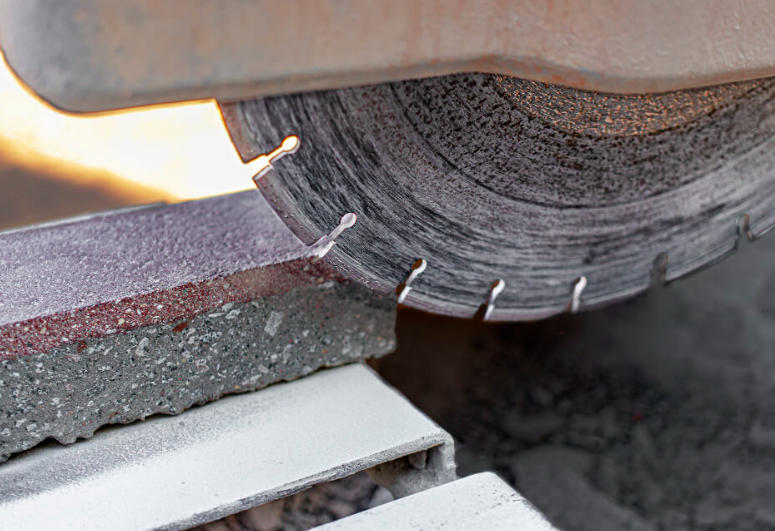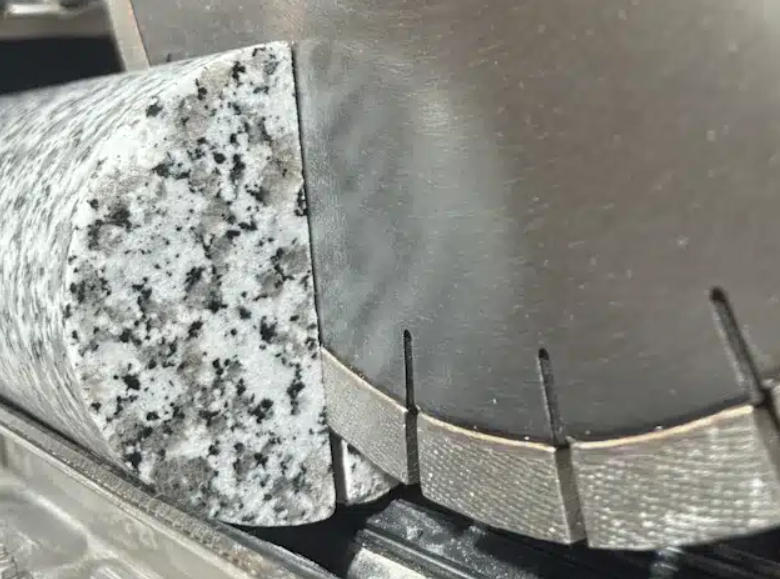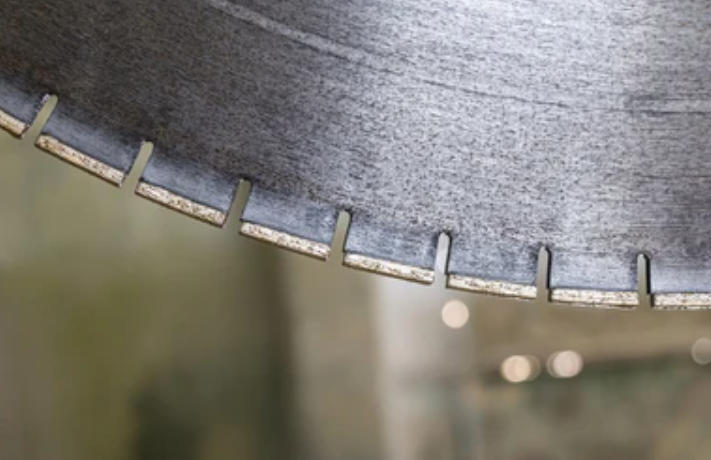Views: 0 Author: Site Editor Publish Time: 2025-10-14 Origin: Site
When it comes to cutting through dense and demanding materials such as concrete, asphalt, tile, or natural stone, nothing performs better than a high-quality diamond blade. These blades are designed with industrial-grade diamond segments that provide exceptional precision, long-lasting durability, and cutting efficiency across a wide range of applications—from construction sites and renovation projects to landscaping and tile installation.
However, with so many blade types, bonds, and segment designs available in the market, selecting the right diamond blade for your cutting needs can feel overwhelming. The wrong choice can lead to slower cutting speeds, premature blade wear, and poor-quality finishes. This comprehensive guide will walk you through the essential factors to consider—such as material hardness, bond type, blade diameter, cutting method, and equipment compatibility—to help you make an informed choice and get professional-grade results on every project.

The type of material you're planning to cut is the most critical factor when selecting a diamond blade. Every material—whether it's concrete, asphalt, tile, or natural stone—has its own level of hardness and abrasiveness. Choosing a blade that doesn't match the material's characteristics can result in uneven cuts, overheating, excessive segment wear, or even blade failure. To achieve maximum cutting performance and blade life, it's essential to understand which blade bond and design fit your specific application.
a. Concrete:
For concrete cutting, choose a soft-bond diamond blade that can efficiently cut through hard aggregates and cured concrete. A segmented rim blade is ideal as it offers effective cooling and debris removal during operation. If you're cutting reinforced concrete or green concrete, opt for a laser-welded segmented blade that provides both strength and heat resistance for demanding job sites.
b. Asphalt:
Asphalt is highly abrasive, so asphalt diamond blades are designed with a hard bond to resist rapid segment wear. Look for models that include undercut protection, which prevents excessive wear near the core. These blades are perfect for roadwork, driveway cutting, and general pavement maintenance.
c. Stone:
When cutting granite, marble, or engineered stone, use a continuous rim diamond blade. This design delivers smooth, chip-free cuts, which are especially important for decorative or precision stonework. Some premium options feature vacuum-brazed or sintered diamond segments for extra durability when working with dense stone.
d. Masonry:
For general masonry materials such as bricks, blocks, pavers, and limestone, choose either a segmented or turbo rim blade. Segmented blades handle dry cutting and high-speed applications well, while turbo blades provide a balance between fast cutting and smoother edges. Their versatility makes them a go-to option for both contractors and DIY users handling multiple material types.
Selecting the correct blade for your material type ensures cleaner cuts, faster progress, and less wear on your tools—ultimately saving both time and cost on the job.
More read: Segmented Blade vs Turbo Blade vs Continuous Rim Blade
The blade diameter plays a key role in determining the cutting depth, speed, and overall efficiency of your work. Each diamond blade is engineered to perform optimally within a specific diameter range, which directly corresponds to how deep it can cut into a material. Selecting the correct diameter not only ensures you achieve the required cutting depth but also helps maintain safety and equipment longevity.
For instance, smaller blades—such as 4-inch to 7-inch diamond blades—are commonly used with handheld grinders and circular saws for surface-level or precision cutting tasks. These are ideal for tile work, decorative cutting, or shallow grooves in concrete or stone. On the other hand, larger blades, typically ranging from 12 inches to 24 inches or more, are designed for walk-behind saws and floor saws, making them suitable for cutting thicker slabs, roadways, and structural concrete.
It's also important to match the blade diameter to the maximum capacity of your saw. Using a blade that exceeds the tool's specifications can lead to unbalanced operation, overheating, or even equipment failure. Conversely, using a blade that's too small might prevent you from reaching the required depth, forcing multiple passes that waste time and wear out the blade prematurely.
When in doubt, always check your equipment's manufacturer recommendations for compatible blade sizes and ensure that your diamond blade's arbor size fits securely onto the saw spindle. A properly sized and balanced blade will provide smoother cuts, higher accuracy, and a longer service life, helping you maximize performance across various cutting applications.

Diamond blades are available in a variety of designs, each tailored for specific materials and cutting techniques. Understanding the differences among blade types helps you achieve optimal cutting performance, reduce waste, and improve efficiency on the job site. The blade's rim style, segment structure, and bonding method all influence how it interacts with different materials. Here's a closer look at the main types of diamond blades and their ideal uses:
a. Segmented Diamond Blades:
These are the most widely used blades for concrete and masonry cutting. Their rim is divided into segments separated by gullets, which serve two critical functions: improving air circulation for cooling and creating space for debris removal. This design minimizes overheating and allows for faster, deeper cuts in hard and abrasive materials such as cured concrete, bricks, and stone blocks. Segmented blades are typically used for dry cutting, but many high-performance models are also suitable for wet applications to extend lifespan.
b. Continuous Rim Diamond Blades:
A continuous rim blade features a smooth, uninterrupted edge that provides precise, chip-free cuts, making it perfect for ceramic tile, porcelain, glass, and marble. Because it lacks gullets, it generates minimal vibration and produces clean edges, which is essential for fine finishing work or decorative installations. Continuous rim blades are primarily used for wet cutting, as water helps cool the blade and prevent edge chipping.
c. Turbo Diamond Blades:
Turbo blades are designed with a serrated rim pattern that bridges the gap between segmented and continuous designs. The result is a blade that offers both speed and smoothness—ideal for versatile applications like cutting granite, tile, concrete, or brick. The spiral rim design enhances air flow for better cooling, while maintaining a relatively clean cut. Turbo blades are highly valued by contractors for multi-material cutting, providing an excellent balance of durability, precision, and efficiency.
d. Sintered Diamond Blades:
Sintered blades are engineered for cutting through extremely dense or hard materials such as granite, porcelain, or engineered stone. Manufactured through a high-pressure sintering process, they feature densely packed diamond particles that offer superior strength and longevity. Although these blades tend to be more expensive, they deliver extended life and exceptional performance under continuous heavy-duty use, making them ideal for professionals requiring consistent, precise results.
Selecting the right blade type ensures that you not only achieve a cleaner and faster cut but also extend the service life of your tools—reducing downtime and saving on replacement costs in the long run.
When selecting a diamond blade, one of the most important decisions you'll face is whether your project requires wet cutting or dry cutting. Each method has unique advantages depending on the material, work environment, and type of saw being used. Making the right choice helps optimize cutting speed, blade life, and job safety.
Wet Cutting:
Wet cutting uses a steady stream of water as a coolant and lubricant, dramatically reducing friction and heat buildup during operation. The water also flushes away dust and debris, preventing airborne particles from spreading—a major benefit for indoor or enclosed environments. Moreover, the cooling effect minimizes the risk of blade warping or segment loss, effectively prolonging the blade's lifespan. As a result, wet cutting is the preferred option for long, continuous cuts in concrete, asphalt, and masonry, where precision and durability are essential. The water cools down the tool more effectively, so there is also a smaller risk of overheating-related hazards.
Dry Cutting:
Dry cutting, on the other hand, does not require water and is typically used for quick, shallow, or on-the-go cutting jobs. This method is convenient when water is unavailable or not practical—such as in remote locations or small-scale repairs. However, dry cutting naturally generates more heat and dust, so it's crucial to allow the blade to cool down periodically by making shorter cuts and lifting the saw between passes. Using a vacuum or dust control system is also highly recommended to improve air quality and visibility.
In general, always ensure that the diamond blade you select is rated for the cutting method you plan to use. Wet blades should not be run dry, as lack of cooling can damage the segments, while dry blades can be used wet for added longevity. Matching the cutting method to your material and blade type ensures optimal results, greater safety, and the longest possible tool life.
More read: Wet vs Dry Cutting: Does A Wet Blade Cut Better?

Another critical factor to consider when selecting a diamond blade is the horsepower and RPM (revolutions per minute) rating of your cutting equipment. Every diamond blade is engineered to perform optimally within a specific speed and power range, and operating outside these parameters can severely impact performance, safety, and blade lifespan.
If your saw provides insufficient horsepower, the blade may not maintain the necessary cutting speed to efficiently grind through dense materials like concrete or stone. This can lead to slower cutting, glazing of the diamond segments, or even stalling of the machine. Conversely, running a blade on equipment with excessive RPM or power output can cause overheating, segment loss, or catastrophic blade failure, posing serious safety risks.
Before installation, always check the maximum safe operating speed (usually marked in RPM) printed on the blade's label. Then, verify that your saw's spindle speed matches or remains below that rating. As a general rule, the blade's rated RPM must always exceed the machine's actual RPM to ensure safe operation. For instance, a 12-inch diamond blade typically operates efficiently at around 5,000–6,000 RPM, while larger blades require proportionally lower speeds.
Additionally, the saw's motor power should align with the blade diameter and material hardness. A low-horsepower handheld saw might be suitable for tile or thin masonry, but thicker concrete or asphalt demands a high-horsepower floor saw or wall saw to maintain cutting consistency and reduce strain on the tool.
By ensuring proper RPM and horsepower compatibility, you'll not only achieve smoother, faster cuts but also extend the life of your diamond blade, reduce equipment stress, and maintain safer working conditions throughout your project.
Choosing the right diamond blade is more than just a matter of convenience—it's the foundation of a successful, efficient, and cost-effective cutting project. The right blade ensures cleaner cuts, faster progress, and a safer work environment, whether you're tackling concrete, asphalt, tile, masonry, or stone.
To make the best decision, always take into account the material type, blade bond and rim design, cutting method (wet or dry), blade diameter, and the horsepower and RPM compatibility of your cutting equipment. Each of these elements directly influences the blade's cutting performance, heat dissipation, and lifespan. A blade that's optimized for your specific task will not only deliver professional-grade precision but also reduce maintenance costs and equipment downtime.
Remember, a high-quality diamond blade is an investment in productivity and durability. While cheaper options may save money upfront, premium blades typically offer longer life, consistent performance, and better cost-per-cut value over time. Whether you're a contractor, mason, or DIY user, it pays to choose a trusted supplier that provides blades engineered for your exact application.
So, before you fire up your next saw, take a few moments to review your project requirements and select the best diamond blade for your cutting needs. Doing so ensures every cut is smooth, efficient, and precise—setting your project up for long-term success from start to finish.
